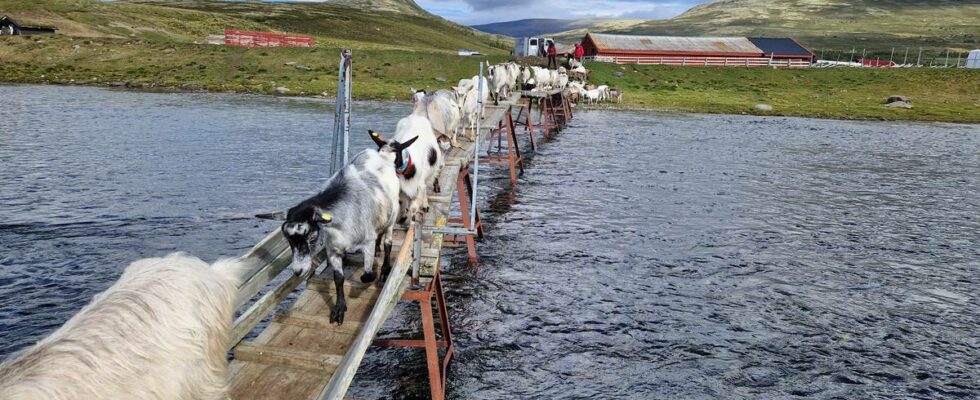The case in summary A unique research project is being carried out on Meløya seats in Einunndalen, where researchers are investigating how goats can release less methane gas through burping and farting. The project is led by Eirik Selmer-Olsen in Metanhub, and is the first of its kind. Methane is a greenhouse gas that is more harmful to the climate than CO₂, and agriculture accounts for over 50% of the emissions of this gas. In the project, some goats are fed concentrated feed that has methane inhibitors in it, while the rest are fed normal concentrate. In addition, some graze in the infield, others in the outfield. The researchers measure how much methane the goats release, and map what they eat when they are out grazing. The results of the research can have a major impact on how we handle greenhouse gas emissions in the future. The summary is made by an AI service from OpenAi. The content is quality assured by news’s journalists before publication. At the Meløya site in Einunndalen, a unique research project is currently underway. One is investigating how the goats can release less methane when they burp, breathe and fart, using a method that has not been used before. – I have read a lot, and I have not read that anyone has done what we are doing now, says project manager at Metanhub, Eirik Selmer-Olsen. Eirik Selmer-Olsen is responsible for the Metanhub project. Photo: Geir Olav Slåen / news Measuring methane emissions The greenhouse gas methane is considered to be even more harmful to the climate than CO₂. According to the Norwegian Environment Agency, agriculture accounts for more than 50 percent of the emissions of this gas. A herd of goats runs on the setra in Nord-Østerdalen, which is now researched and grazed. In the research project, some go on infield grazing and others on outfield grazing. In addition, there are forums with concentrates that have methane inhibitors in them. The rest get the usual concentrated feed. In this way, they will find out what factors play a role in methane emissions from the goats. They have all tried it on dairy cows, and have plans to do it with suckling cows and sheep. Photo: Geir Olav Slåen / news Several times a day, the goats go in and out of a van that is parked outside on the setra. The van is full of chambers, and in these, measurements are made of how much methane they let out. The researchers also map what the animals eat when they are out grazing. In the mountains, there are many plant species that are rich in tannin. Several times a day, the goats stop by the van to measure how much methane they let out. Photo: Geir Olav Slåen / news – Research shows that this can have a methane-inhibiting effect, says Margrete Eknæs, researcher at NMBU. Grazing can therefore have an impact on the amount of methane the goats release. The research will hopefully say enough about this. Methanehub Methanehub is a research project for the entire cattle and small livestock industry, led by Tine. It will build knowledge and documentation about methane reduction in Norwegian food production. Among the actors who participated are Tine, NMBU, Nibio, Nortura, Geno, NSG and Tyr. The project lasts four years, and different types of methane inhibitors are tested in the feed for Norwegian ruminants. By 2030, the feed must be used on all ruminants in Norway. Metanhub has received a grant over the Agricultural Agreement in 2023. The partial project in Einunndalen is partially financed by Innlandet County Municipality. Source: Tine and Innlandet county municipality Elsa Marie Rødby (Sp), Storting representative for Akershus, which is the municipality in which NMBU is located, was also on a visit to setra. She is very positive about the project. – Together with researchers from Ås, agriculture is doing a great job to do what they can when it comes to climate emissions. Storting representative for Akershus, Elsa Marie Rødby (Sp), is positive about the project. Photo: Geir Olav Slåen / news She is excited about what can come out of the research. – We have climate obligations which mean that we have to work better with, for example, methane emissions, and now we see in practice that it is possible. I think that is incredibly positive. Published 05.09.2024, at 16.54
ttn-69
Unique research project on methane emissions from goats in Nord-Østerdalen – news Innlandet – Local news, TV and radio

